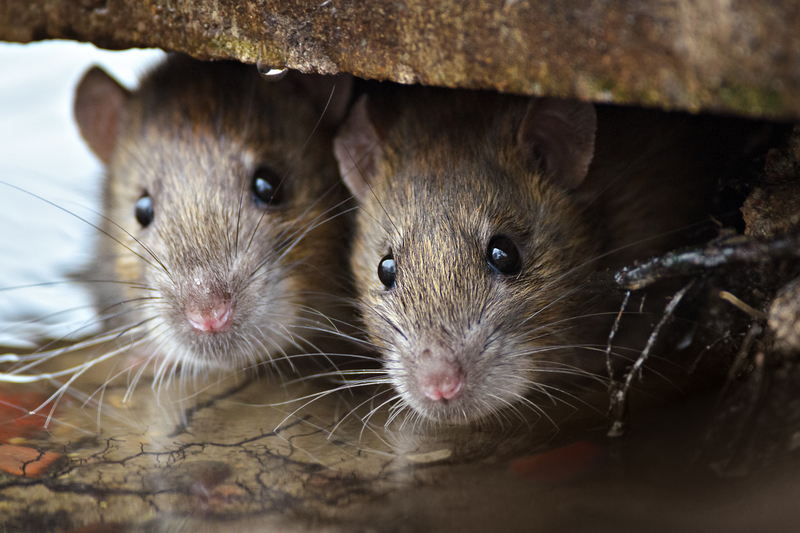Eco-Friendly Jewelry Cleaning Techniques
Posted on 20/09/2025
Eco-Friendly Jewelry Cleaning Techniques: The Ultimate Guide for Sustainable Sparkle
Jewelry holds sentimental value, beauty, and elegance for many. However, over time rings, necklaces, and bracelets lose their sparkle due to dirt, oils, and everyday wear. While traditional cleaning methods often rely on harsh chemicals and unsustainable practices, eco-friendly jewelry cleaning techniques are gaining popularity among environmentally conscious consumers. In this comprehensive guide, you will discover sustainable, gentle ways to care for your precious pieces--ensuring both your jewelry and the planet stay dazzling.
Why Choose Eco-Friendly Jewelry Cleaning Methods?
Before delving into specific cleaning methods, let's explore the importance of adopting green and sustainable jewelry cleaning solutions:
- Protect your health: Chemical cleaners can contain toxins that endanger your skin and respiratory system.
- Preserve the Earth: Conventional cleaners may pollute waterways and harm wildlife.
- Extend Jewelry Life: Gentle, earth-friendly methods prevent abrasions and discoloration.
- Cost-Effective: Most natural cleaning techniques use household ingredients, saving you money in the long run.
Eco-conscious jewelry maintenance benefits everyone--so let's explore how to clean your classics safely and naturally.

Understanding Your Jewelry's Materials
Identifying the types of metal and stones in your jewelry is essential for selecting the best eco-conscious cleaning techniques. Here's a quick overview:
- Gold & Silver: Both are soft, precious metals that can tarnish or scratch easily if not cleaned gently.
- Platinum: Durable but may dull over time.
- Diamonds & Gemstones: Hard stones that can accumulate grime in settings.
- Pearls & Opals: Delicate and porous - require the gentlest cleaning.
If you're unsure about your jewelry's makeup, consult a professional before applying any cleaning method, even eco-friendly ones.
Top Eco-Friendly Jewelry Cleaning Techniques
1. Baking Soda & Water Solution
Baking soda is a trusted household ingredient for many natural cleaning routines. Not only does it gently lift residue from metals, but it's also non-toxic and biodegradable.
- Mix three parts baking soda with one part water to form a thick paste.
- Carefully rub the paste onto your jewelry using a soft, clean cloth, focusing on tarnished or dirty areas.
- For tight spots, use a gentle-bristled toothbrush.
- Rinse with lukewarm water and buff dry with a lint-free cloth.
This technique is ideal for sterling silver and gold (not recommended for soft gemstones, pearls, or opals).
2. Gentle Dish Soap and Warm Water Soak
Perhaps the simplest of eco-friendly jewelry care methods is a mild soap soak.
- Combine a few drops of biodegradable, phosphate-free dish soap with warm (not hot) water in a bowl.
- Let your jewelry soak for 10-20 minutes.
- Use a soft brush to remove built-up grime.
- Rinse with clean water and pat dry.
This safe solution works well for most precious and semi-precious stones, as well as metals, but avoid soaking pearls and other porous stones.
3. Vinegar and Water Rinse
White distilled vinegar is a powerful, natural cleaner and deodorizer. For harder jewelry metals and gemstones, it offers an effective, green cleaning option.
- Mix equal parts water and white vinegar.
- Soak items for 10-15 minutes.
- Gently scrub with a soft toothbrush if needed.
- Rinse well and dry thoroughly.
Do not use vinegar on pearls, opals, or other organic gemstones, as it can cause lasting damage.
4. Lemon Juice and Baking Soda Paste
This combination provides a gentle yet effective way to refresh tarnished metal without harsh chemicals.
- Make a paste using one tablespoon lemon juice and enough baking soda to create a creamy texture.
- Use a soft cloth to work the paste onto your jewelry.
- Allow it to sit for five minutes, then rinse with warm water and dry.
This is especially good for reviving silver--but avoid using lemon juice on soft stones or plated jewelry.
5. Cornstarch for a Natural Polish
If you want to give your jewelry a gentle polish that's safe and natural, consider cornstarch:
- Mix a little water with cornstarch to make a thick paste.
- Apply with your fingers or a soft cloth, let dry, then rub gently to remove residue and add shine.
This technique is mild and suitable for most solid metals.
6. Green Tea Soak
Green tea is rich in antioxidants and mild acids, making it a unique, planet-friendly cleaner, especially for gold and platinum.
- Brew a cup of green tea and let cool.
- Soak your jewelry for 15-20 minutes.
- Rinse and wipe dry.
This is safe for most metal jewelry but should be avoided with pearls.
Eco-Friendly Cleaning Techniques for Delicate Jewelry
Cleaning Pearls and Opals
Pearls, opals, turquoise, and some antique pieces are particularly vulnerable. Here's an ultra-gentle cleaning method:
- Mix just a drop of mild, phosphate-free dish soap with a cup of lukewarm water.
- Dampen (don't soak!) a clean, soft cloth in the solution and gently wipe each pearl or stone.
- Never submerge pearls or opals in water, as they are highly absorbent and may crack.
- Lay flat on a soft towel to dry.
Regularly wiping pearls after each wear helps maintain their luster the eco-friendly way.
Tips for Sustainable Jewelry Maintenance
Caring for your beloved accessories isn't just about cleaning--it's also about mindful wear and storage. Here are key tips for ongoing eco-friendly jewelry care:
- Rotate Your Jewelry - Alternating your pieces prevents excessive wear and buildup.
- Store Properly - Use soft cloth bags or lined boxes to protect from dust and scratches.
- Avoid Fragrance and Lotions - Put on jewelry after applying perfume or moisturizer to prevent residues from building up.
- Wipe After Wearing - Use a clean, lint-free cloth to remove body oils before putting jewelry away.
- Get Regular Eco-Friendly Professional Cleanings - Opt for jewelers using ultrasonic cleaners with natural solutions or offering green cleaning services.
What to Avoid: Non-Eco-Friendly Cleaning Hazards
Steer clear of the following hazardous substances commonly found in conventional jewelry cleaners:
- Ammonia and Bleach - Corrosive and damaging to most jewelry and the environment.
- Harsh Detergents and Solvents - Can discolor metals and degrade gemstones, as well as harm aquatic life.
- Abrasive Cleaners and Cloths - Causes scratching, especially on precious metals and soft stones.
Always check product labels and choose biodegradable, non-toxic alternatives wherever possible.
DIY Eco-Friendly Jewelry Cleaner Recipes
Natural Jewelry Cleaning Spray
- 1/2 cup white vinegar
- 1/2 cup filtered water
- 1-2 drops castile soap (unscented)
Combine ingredients in a spray bottle. Lightly spritz onto your jewelry, then wipe with a soft cloth. This spray is safe for most metals and hard stones (avoid on delicate organic pieces).
Baking Soda and Salt Tarnish Remover for Silver
- Line a bowl with aluminum foil, shiny side up.
- Add 1 tablespoon baking soda and 1 tablespoon salt.
- Pour in hot water (enough to submerge your silver jewelry).
- Let pieces soak for a few minutes as tarnish transfers to the foil.
- Rinse and dry well.
This chemical-free silver cleaning technique is fast and highly effective!
Benefits of Using Environmentally Safe Jewelry Cleaners
- Safe for Sensitive Skin: Reduces risk of allergies and skin irritation.
- Pet and Kid Safe: Natural cleaning choices are non-toxic for every family member.
- Biodegradability: These products break down safely in water and soil.
- Responsibility: Small actions contribute to global sustainability efforts.
Proper Disposal of Old Jewelry Cleaners
If you're transitioning to eco-friendly jewelry cleaning techniques, you may wonder what to do with leftover commercial cleaners. Here's how to dispose of them responsibly:
- Do not pour old jewelry cleaners down the drain; many contain harmful chemicals.
- Research your local hazardous waste disposal program to find a drop-off location.
- If the product allows, use up the remainder before switching to greener options.
- Always rinse containers before recycling.

FAQs on Eco-Friendly Jewelry Cleaning
Can I use toothpaste as a green jewelry cleaner?
No. Toothpaste is abrasive and can create micro-scratches on gold, silver, and especially soft gemstones. Stick to the gentle eco-friendly solutions above.
How often should I clean my jewelry?
Most jewelry benefits from a gentle clean every 2-4 weeks, more if you wear it daily or expose it to lotions, perfumes, or sweat.
Are there eco-friendly commercial jewelry cleaners?
Yes. Look for brands that are biodegradable, non-toxic, and cruelty-free. Always check the ingredient list for unnecessary chemicals.
Conclusion: Sustainable Shine Is Simple
With a few simple homemade recipes and some easy-to-adopt habits, eco-friendly jewelry cleaning techniques offer a safe, cost-effective way to maintain your favorite rings, necklaces, and bracelets. Not only do these green solutions help your jewelry sparkle, but they also protect your family and the environment. By choosing sustainable jewelry cleaning practices, you honor both the beauty of your treasured items and the health of our planet.
Keep this guide handy for next time your beloved jewelry needs a refresh--naturally!
```




